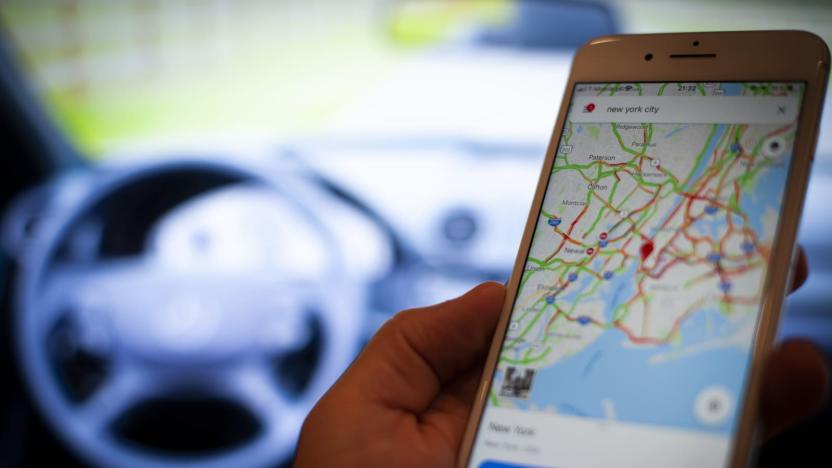GNSS
Latest

Europe's sat-nav network crippled by 'technical incident'
Europe's Galileo satellite network, freshly approved by the FCC for US smartphones, has suffered a serious outage. The system has been down since Friday due to what officials at the European GNSS Agency (GSA) have described as a "technical incident related to its ground infrastructure." That means users with newer smartphones that support Galileo will be relying on GPS, Russia's Glonass or the Chinese Beidou networks for navigation, instead.

FCC ruling will help make smartphone GPS more accurate
GPS stands for "global positioning system," which is slightly ironic since it's owned and operated by the US Air Force. However, the FCC has just made a move to open up satellite navigation beyond America's borders. A new order means your smartphone can also use Europe's Galileo system, which will make sat nav faster and more accurate, the regulator said.

Scientists plot sea levels using GPS satellites
Accurate sea level measurements are more critical than ever, but there are a limited number of radar satellites designed for that purpose. However, a team from the UK's National Oceanography Centre (NOC), University of Michigan and NASA's Jet Propulsion Laboratory have discovered a new way to do so using much cheaper and more plentiful GPS satellites. The technique is called GNSS-R, and involves bouncing low-powered signals from GPS satellites off of the ocean's surface and measuring the reflected signal with a GNSS-R receiver. That lets the sat-nav constellation act as a type of distance-measuring radar without disrupting its regular job -- guiding cars and airplanes.

Bluetooth SIG embraces GNSS Profile 1.0 for GPS data sharing
Hot on the heels of a new Broadcom system that taps into the Global Navigation Satellite System (GNSS) in order to reduce first-lock times, the Bluetooth Special Interest Group has quietly adopted GNSS Profile 1.0 for GPS data sharing. According to Phone Scoop, the profile can be used by all devices boasting Bluetooth 2.0 and up, and it'll allow GPS-enabled products to share positioning data with another nearby product over BT. Specifically, "the GNSS profile specification defines the Serial Port Profile (SPP) based transport mechanism and associated service discovery record parameters needed to establish a service level connection between two devices," which should make GPS data sharing as easy as contact sharing of yesteryear. Practical applications? With a plethora of location-based social networking apps already on the market, we're certainly playing the wait-and-see game on this one.

CSR sharpens indoor and in-car navigation with SiRFstarV, SiRFusion and SiRFprimaII
It's been a while since we last heard from CSR, but that changed earlier this week, when the company unveiled its new SiRFprimaII and SiRFusion platforms, alongside its SiRFstarV architecture. According to the UK-based firm, both SiRFstarV and SiRFusion are designed to provide more accurate geographic data and enhanced indoor navigation capabilities across PNDs and other mobile devices. SiRFstarV, the logical follow-up to CSR's SiRFstarIV architecture, culls location data not only from GPS, but from Galileo, Glonass and Compass satellites, as well as a range of radio signals, accelerometers, gyros and compasses. All this information is fed to the user via the SiRFusion platform, which combines data from radio systems and sensors to provide constantly updated location graphics. Together, both SiRFstarV and SiRFusion promise to help users find their way around both indoor and outdoor locales, within an accuracy range of ten to 15 meters. The SiRFprimaII platform, displayed above, is strictly geared toward in-car navigation and infotainment systems. This system combines a SiRFprimaII SoC and TriG RF multi-GNSS radio with CSR's Bluetooth and WiFi technologies to create a multimedia rich, touchscreen-based in-car environment. Geared toward both ODMs and OEMs, this hardware-software combo enables drivers to get more reliable navigation data, while allowing passengers to stream video, surf the web and manipulate everything via remote control. As for that SoC, it's powered by a 1GHz ARM Cortex A9 app processor, features an LCD controller for displays of up to 1280 x 720 resolution, and boasts a pair of 3D graphics and video accelerators. For more details, check out the pair of press releases, after the break.

US and EU reach agreement on satellite navigation
The United States and the European Union are moving forward on a common system of satellite navigation after reaching an agreement on a joint civil signal for the technology. The US system, called Navstar GPS, is the only fully operational GNSS (Global Navigation Satellite System) currently in use, though the EU's Galileo project is in the initial stages of deployment. The new agreement eliminates compatibility and security issues, and will allow makers of GPS equipment to increase their devices interoperability by utilizing the new common signals, dubbed GPS L1C and Galileo L1F. The European Commission's Director-General Matthais Ruete says the agreement will "facilitate the rapid acceptance of Galileo in global markets side by side with GPS." Which probably means we're going to begin to see a whole slew of new satellite technology hitting both shores in the near future. Huzzah!


